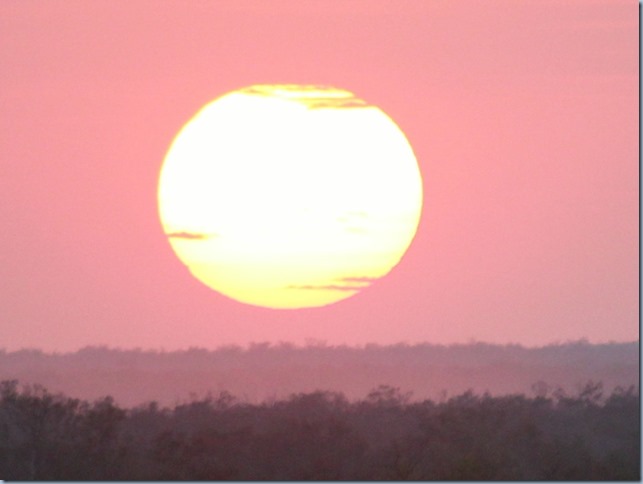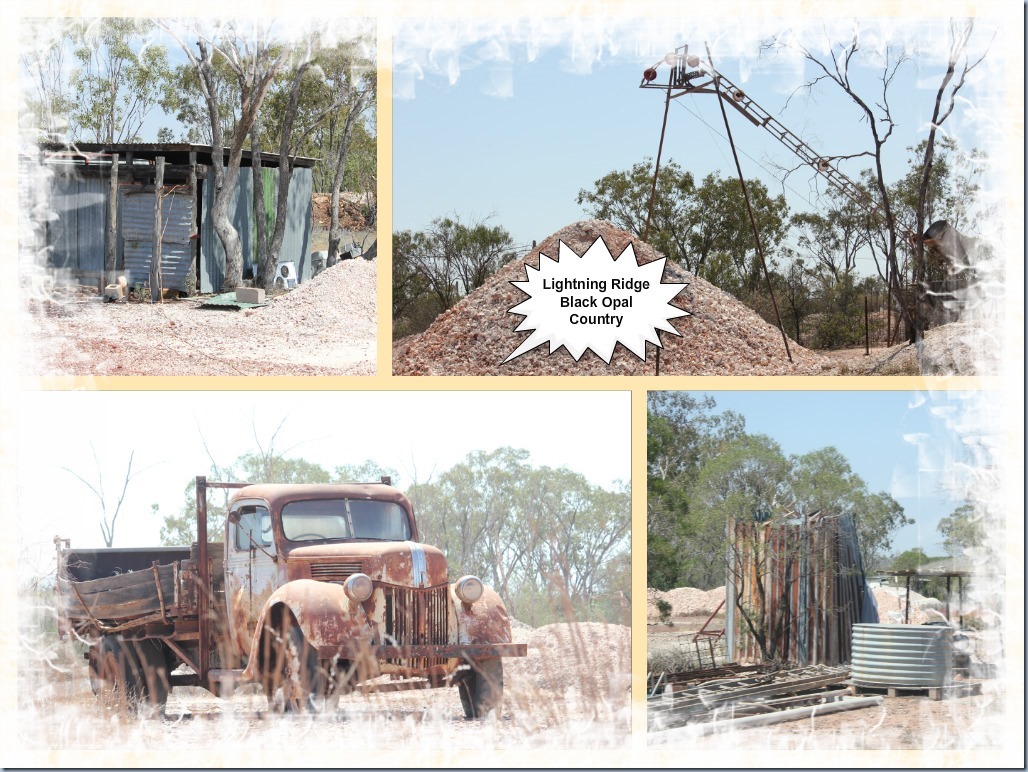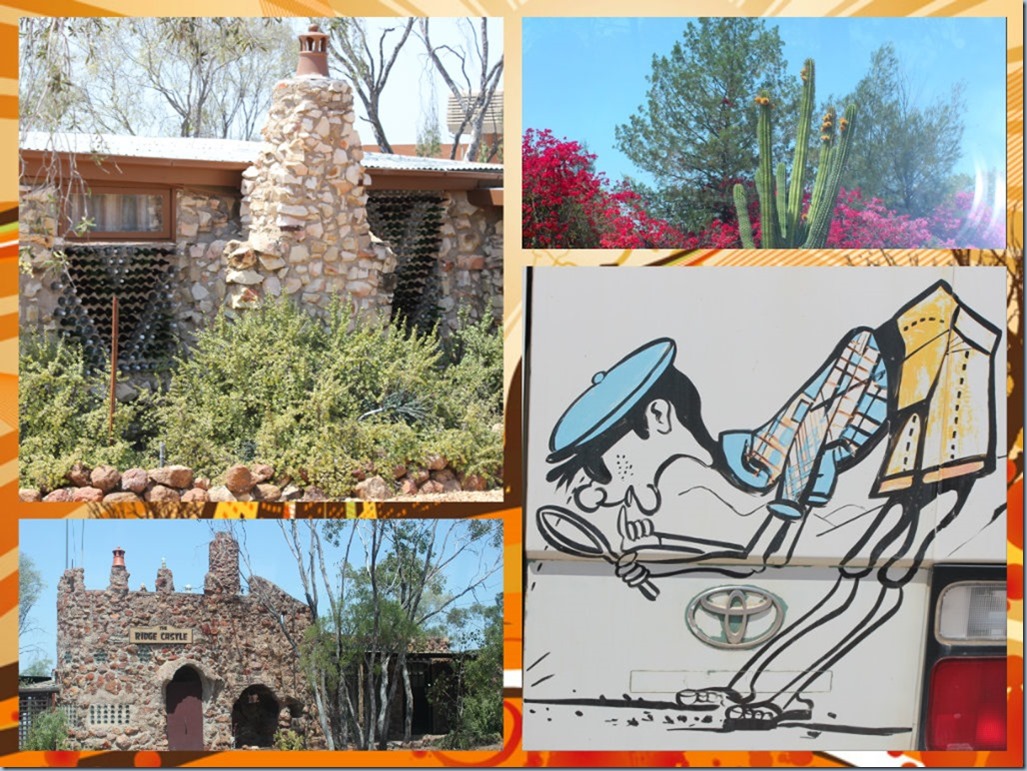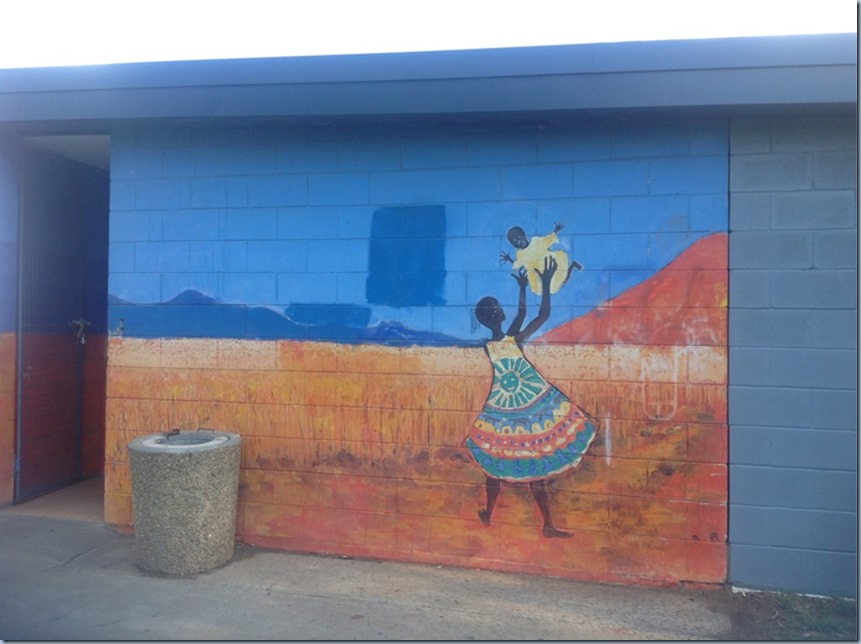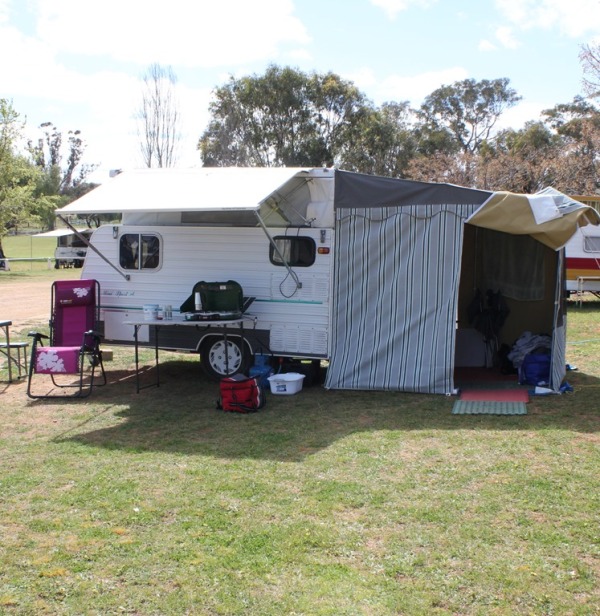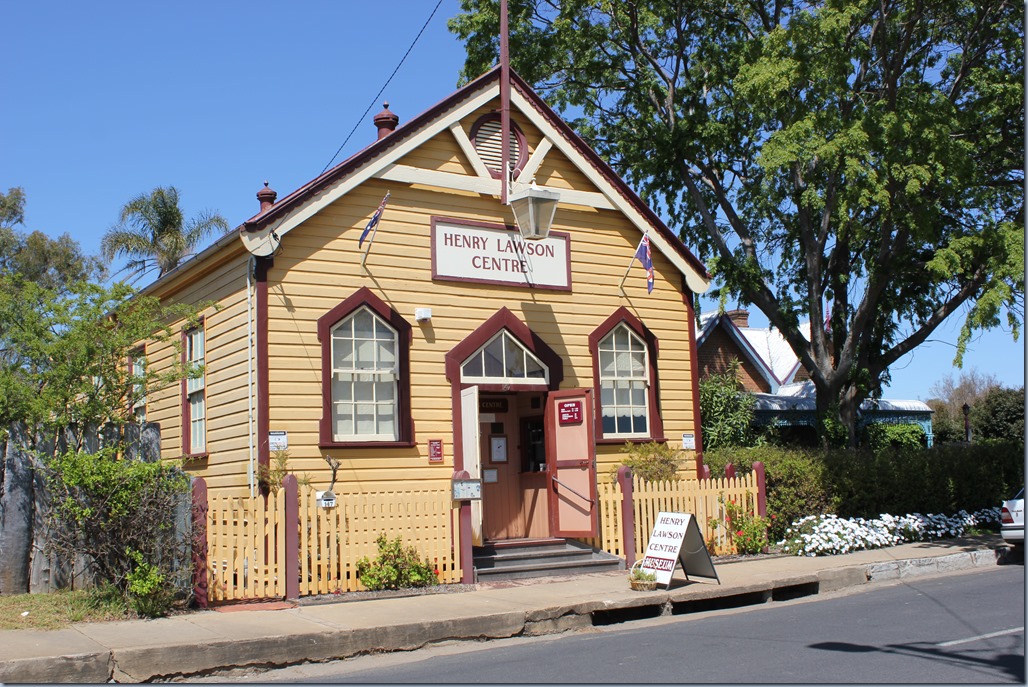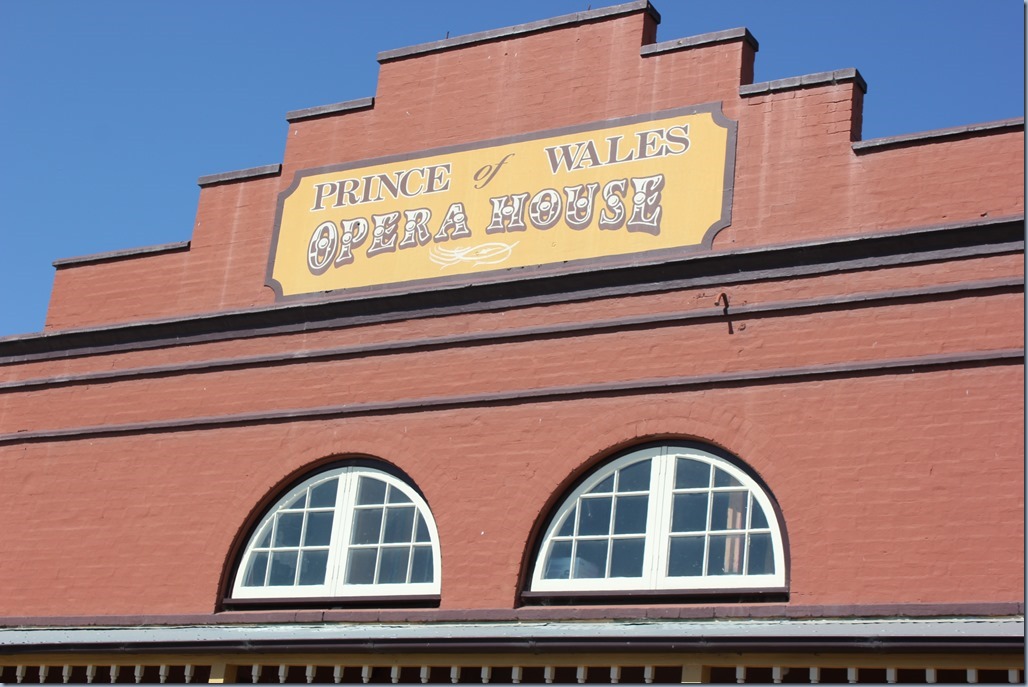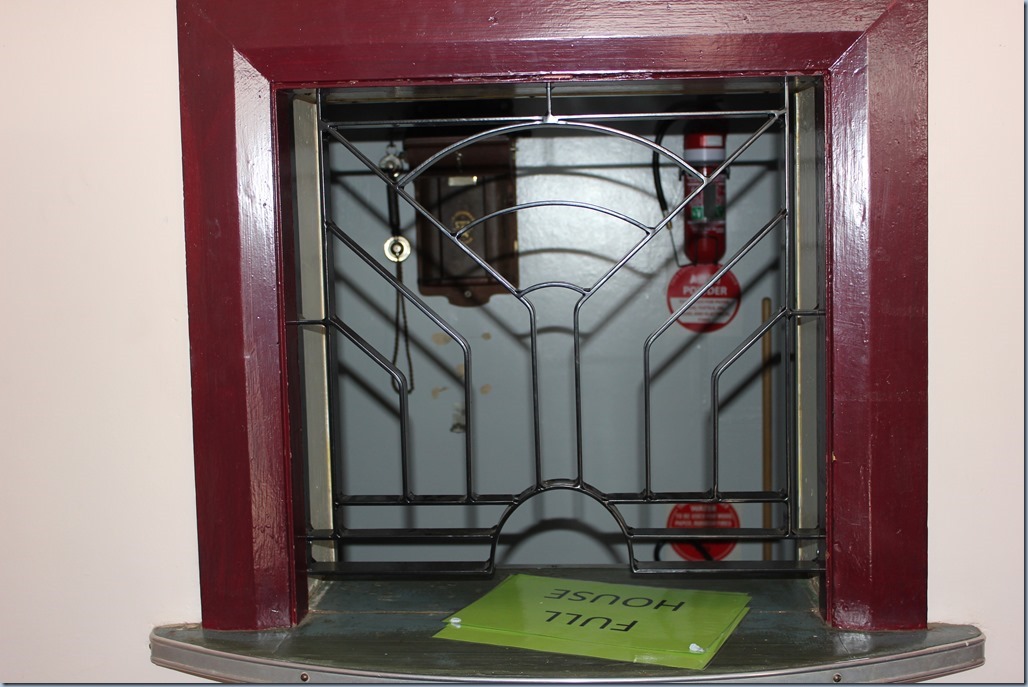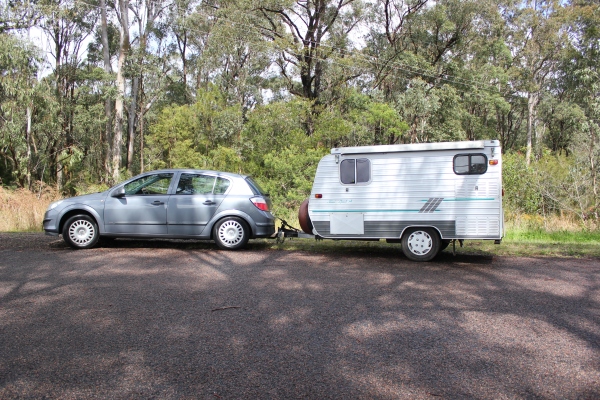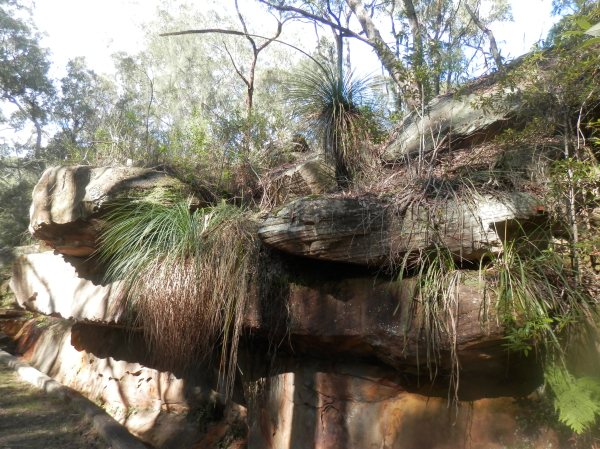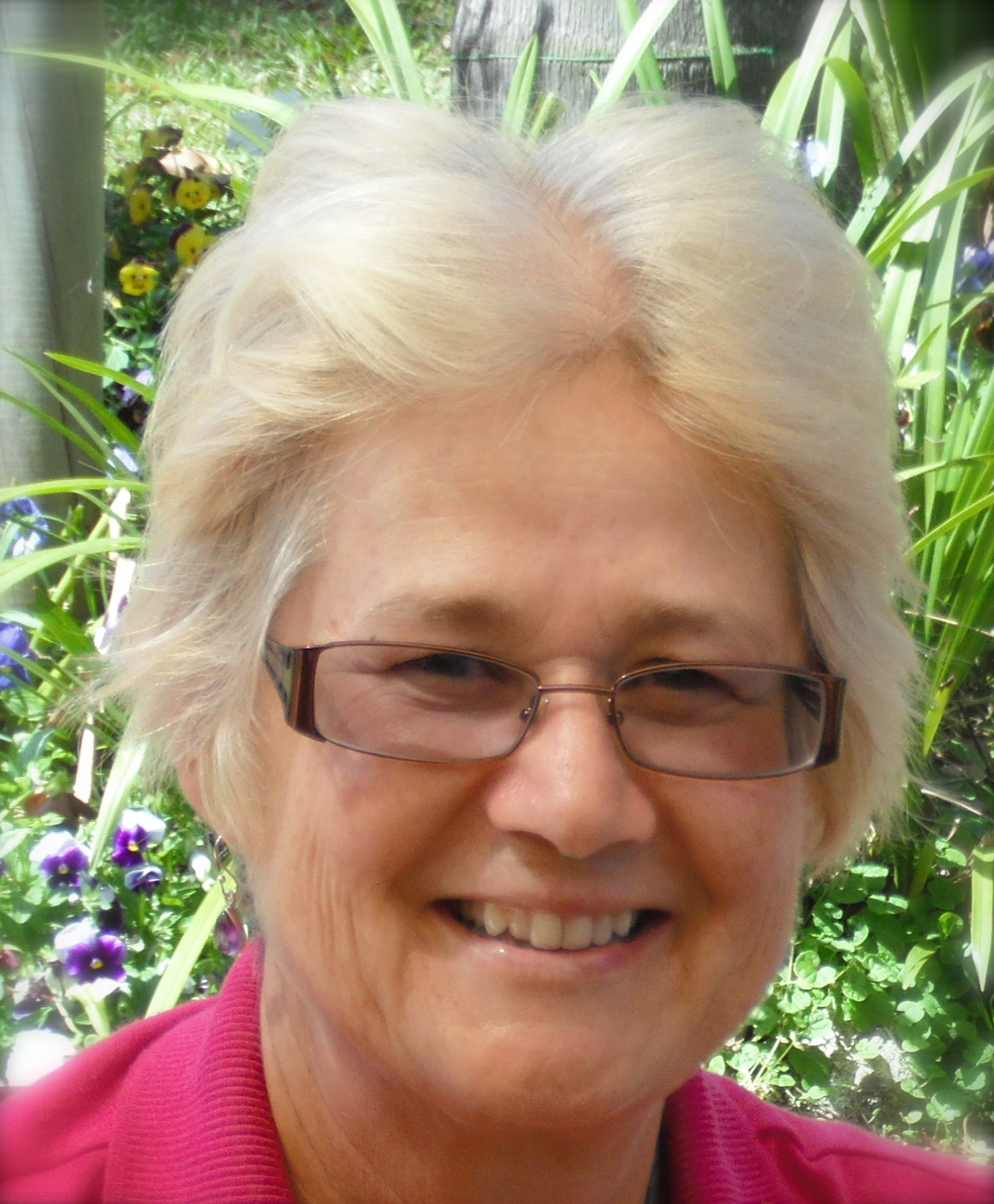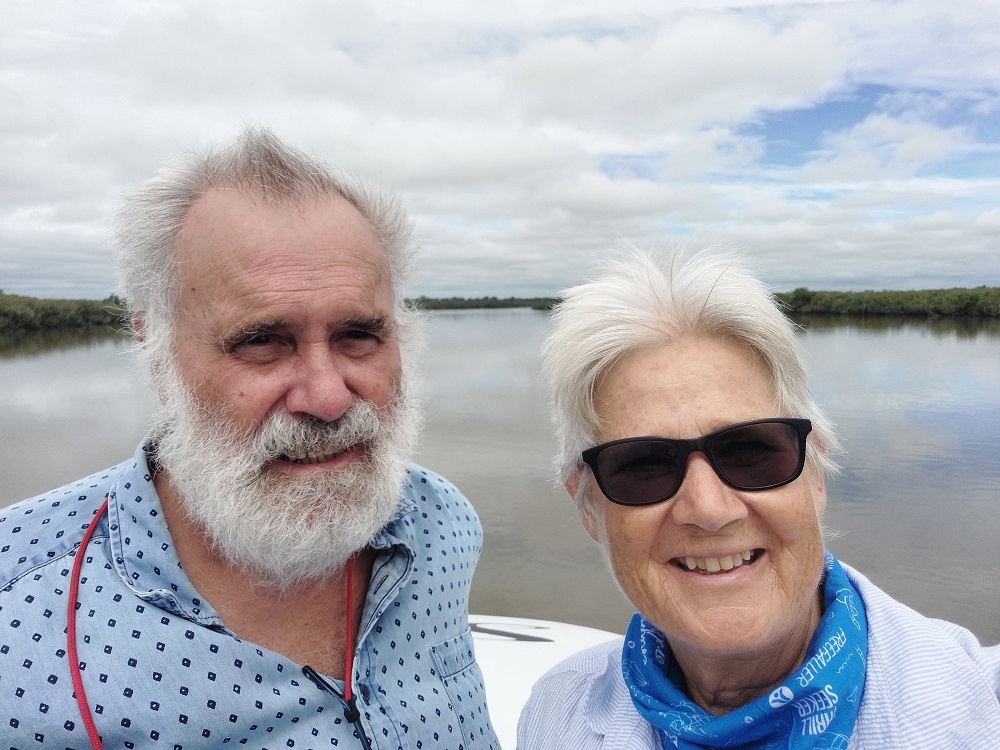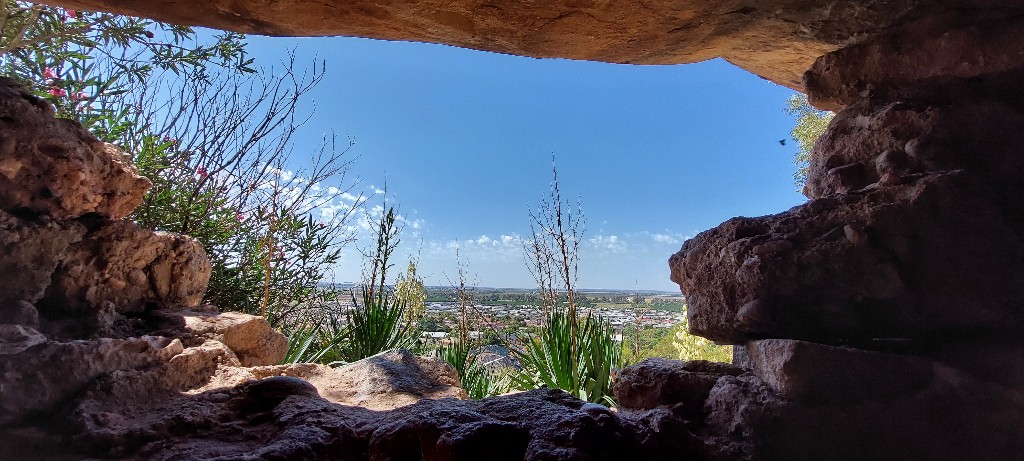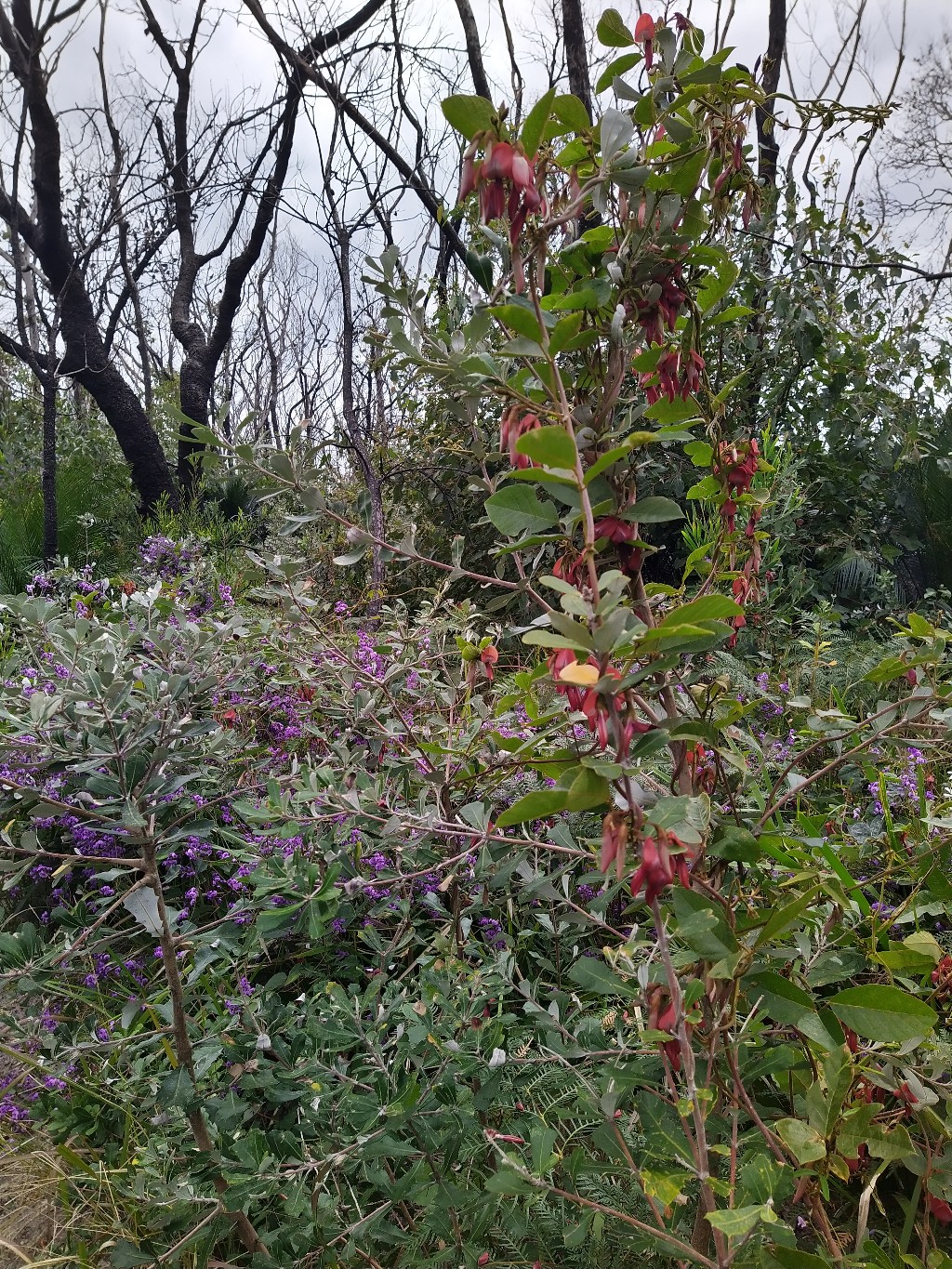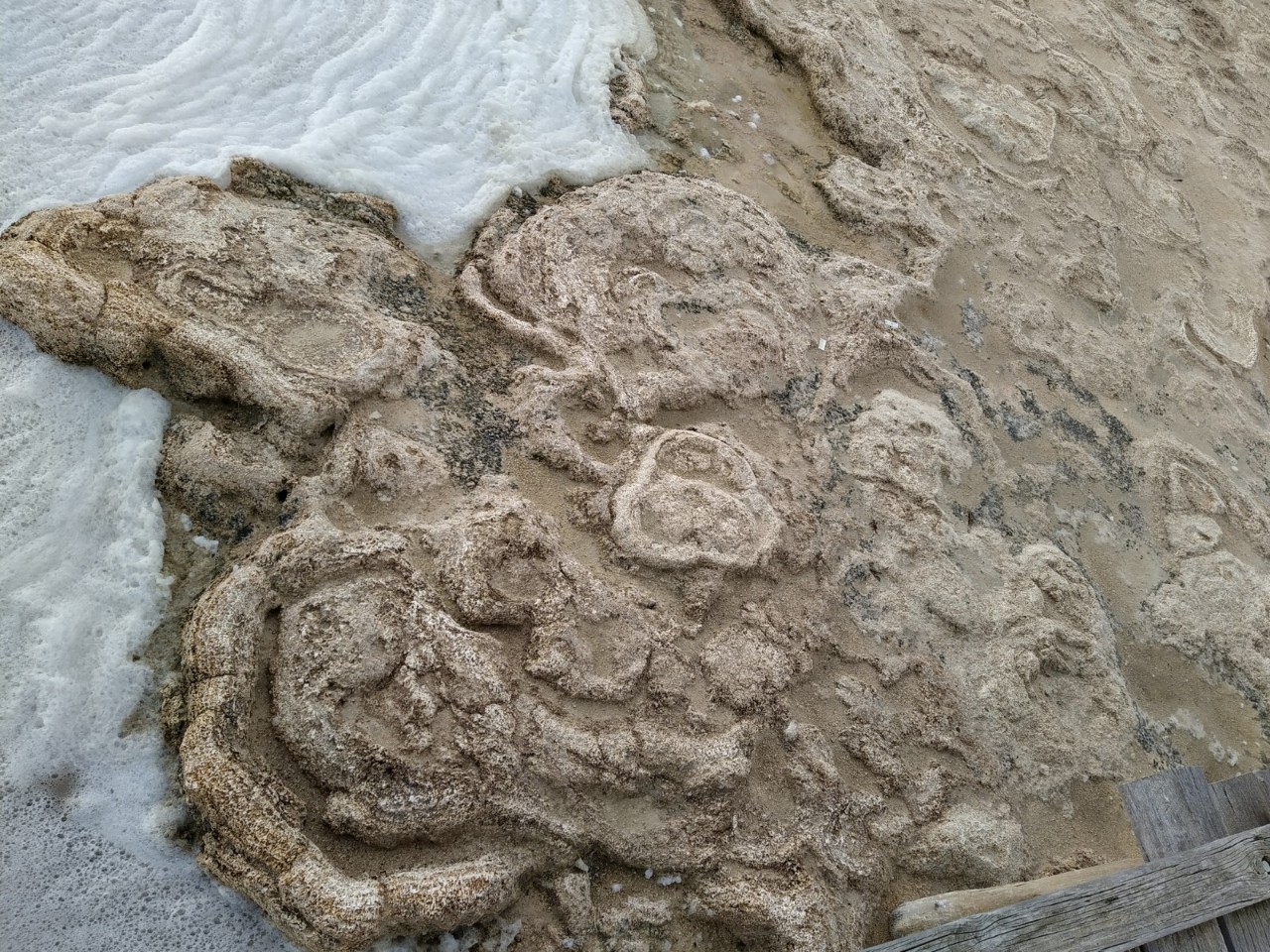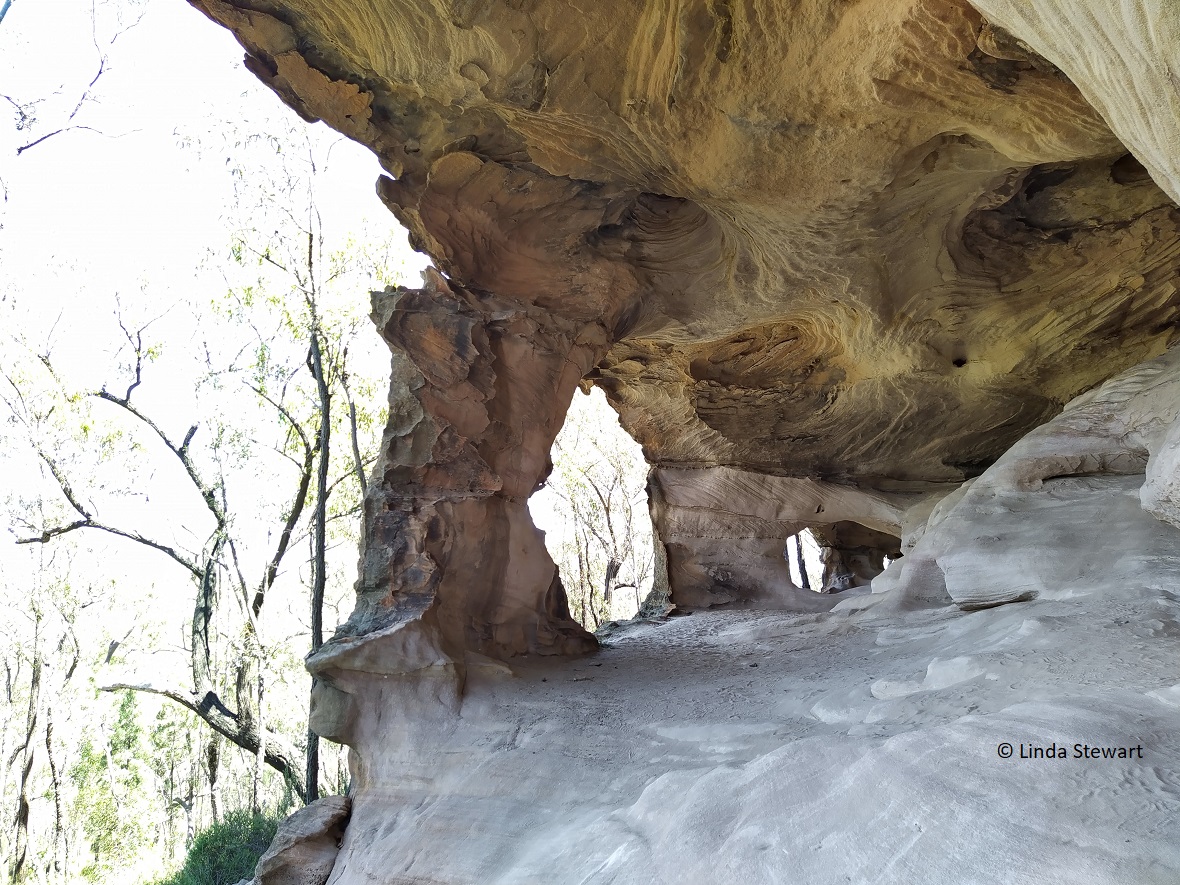Moving Camp
 Whether we blog to earn a living, to showcase our photographic prowess or because we have something important to say, it all takes effort. Sometimes enthusiasm rides in on a white horse to save the day, other times getting the post out there is plain hard work.
Whether we blog to earn a living, to showcase our photographic prowess or because we have something important to say, it all takes effort. Sometimes enthusiasm rides in on a white horse to save the day, other times getting the post out there is plain hard work.
You’d imagine writing about camping and adventure, and finding new places where wondrous things happen is a cinch and mostly it is. I enjoy researching the places we visit and then wandering about knowing a little of the history and selecting photographs to help illustrate the fabulousness of where we’ve set camp.
During a Blogging 201 learning curve it was pointed out that blogging is most successful when one has a particular focus, which my original (and still existing) blog did not have. As a new blogger I took note and set up Catch Us Camping as a place to talk about our experiences in our camper trailer. I continued to write for my original blog which has a reasonable following while continuing to post to Catch Us Camping when we were away.
Catch Us Camping has a small following and every now and again someone stops long enough to comment and I love that (Hi L). However, I’m too old to be maintaining two web sites and keeping both current so it is time to consolidate the two places into one: one place where all kinds of things happen. All things Camping will now fall under a separate category on the banner menu of QP and Eye which is my primary, and now only active blogging home.
It is time to say goodbye on this site, come visit me at QP and Eye.
Lightning Ridge (3)
You would miss Lightning Ridge on an Australian map if you were not specifically heading there. It is off the well worn Castlereagh Highway and just south of the Queensland border. What makes it worth the 8km detour is that it is one of the few places in the world where black opals are found and black opal are recognised as the most rare and valuable form of opal in the world. Australia produces nearly all of the world supply of the rare and valuable black opal.
So what is Black Opal? Opal is non-crystalline silica, similar to quartz, but is not a mineral. Its internal structure enables unique diffraction of light to produce white, grey, red, orange, yellow, green, blue, magenta, rose, pink, slate, olive, brown, and black. Opal is formed from a solution of silica (very fine sand-like particles) and water. In some sandstone outback regions, water passes though the sandstone to form a silica-rich solution that flows to voids formed from decomposed fossils and as the water evaporates, a silica deposit is left. This is repeated over vast periods and from it, an Opal is formed. (Source: Lightning Ridge Website)
With so many attractions we chose carefully and combined a number of the Car Door road trips with an organised half-day trip.
Bird of Paradise Art Gallery
Lightning Ridge has to be seen to appreciate the harshness of outback life and there is a unique, if austere, beauty in the landscape. On the Yellow Car Door road trip we stopped at the Bird of Paradise Art Gallery and were greeted by artist Paul Bird. His semi-naïve style of painting draws inspiration from the colours and surrounding landscape; lots of pink stone and earth works juxtaposed with surrounding red earth. Whilst I was getting the ins and outs of Paul’s approach to his work, the MOTH (Man of The House) was impressed by Paul’s handy stonework on the house he built himself.
On leaving I noticed a sign detailing the artist’s home and listing the home’s positive attributes. I was intrigued, it seemed like a sprawling home with a custom-built studio running the width of the house and all for $144, 000. What a shame the heat and flies are part of the lifestyle, I could have been persuaded.
Chambers of The Black Hand
Ron Canlin is the inspiration behind the Chambers of The Black Hand, an artistic endeavour from which he earns a comfortable living. Over 25 years ago he purchased an unwanted mine with dreams of making his fortune from opal. When that did not happen he turned his focus to the walls of the mine and the potential to express himself in a more creative way.
The chambers are jackhammered from the sandstone, walls are prepared and Ron Canlin’s imagination does the rest, with the help of basic tools of the trade – that include kitchen utensils for the fine sculpting work.
The sculpting depicts faces of celebrities and politicians – and doesn’t Julia Gillard’s face do the caricaturist proud – the Last Supper is a dynamic depiction on one of the hallways between the chambers. Estimates differ but there are between 600 and 700 sculptures in the chambers.
***
Our home for the three days and nights we were in the area was the Opal Caravan Park, a privately owned and brand new caravan park. The owner has used his experience of camping and overnight stays at caravan parks and made this park something of an icon within the caravan and camping fraternity. The amenities received a rave from everyone; clean, plenty of room to place clothes, glass doors on the shower so your clothes don’t get wet, hair dryers, potted plants (even in the men’s block) and a staff who understand customer service.
All this luxury made up for the barren sites of dirt and pebbles. Electric drills (available from the office) were a must to drill holes for tent pegs and there were few trees to provide shelter. However, those issues did not detract from the pleasant staff, great facilities and the swimming pool. The swimming pool was packed each afternoon when temperatures rose to the high 30s and it was a great time to swap travel stories and pick the brains of others who had been where we were headed next – the Warrumbungles.
Lightning Ridge (2)
The bonding experience many feel when arriving in Lightning Ridge may not have happened for us but there were a few magical moments as we explored the town. Usually before leaving home I like to have our adventure stops well researched which includes some background history. This time the curiosity and excitement that usually accompanies an absence from work didn’t happen which means we arrived in The Ridge quite unprepared. That meant our first stop was the Visitor’s Centre.
Knowledge of the must sees and history of a place is the privilege of the locals and picking their brains is a good way to get a feel for a town. We were not disappointed by the reception at the Lightning Ridge Visitor’s Centre.
The sole staffer at the centre was an older than mature man who drawled out a gruff Gidday how ya going greeting that was rather a statement of intrusion than any form of welcome. He was as dry and harsh as the land on which he dragged a living. Having said that he was quick to pick up on our complete ignorance of his town and made sure we left with the information we needed to make our visit enjoyable.
Sunset at Nettleton’s
Me Old Mate’s suggestion that one of the Ridge’s must dos is sunset at Nettleton’s First Shaft Lookout was a highlight and I wish my photographic skills could have done the colours justice.
The Can House
Located near the point where we watched sun set is the Can House, another quirky and creative contribution to Australian bush architecture. It was built in the 1970s and a great example of the ingenuity of miners who built their shelter from whatever they found and in this miner’s case it was beer cans, and a few bottles with which he created artworks that he built in to the walls of his shelter.
The Car Door Drives
Typical of the quirky personalities about town is the humour in the way the locals have put their home town on display. The Car Door Tour is the Ridge’s version of the self-drive tour. Four different tours and each is marked by a different colour-coded door, and each door is numbered around the route with arrows to keep one headed in the right direction. The drives pass working and abandoned opal mines, homes that sprung up as spontaneously as the mines and the shanty shelters miners have erected while on site.
First Impressions of Lightning Ridge
The uneventful trip in to Lightning Ridge was a blessed relief from the dramas of the previous few days. The car ran smoothly and towed The NinkyNonk (caravan) like a boss – no hiccoughs. Dusk is my favourite time of day and one of the main reasons is that temperatures start to drop and with it relief from the heat. Dusk at Lightning Ridge was not like that.
We headed to the Opal Caravan Park which had been recommended with an important “must have” being a swimming pool. We understand the outback is hot and arid and we also know we don’t ‘do’ extreme heat well, the pool was a non-negotiable. It was the correct choice of campgrounds as the amenities are the best we have seen. At last, an architect who understood the basic need to keep one’s clothing and toiletries dry while showering.
The ground was so hard we set camp without securing the annex with tent pegs and then settled in to enjoy happy hour with a few wines. Our sense of satisfaction was short lived as the fly population found us: fresh meat. The locals told us the fly problem was particularly bad for this time of year; the rains three months ago brought on the fly breeding season.
The main pests are female bush flies looking for protein from our tears, spit, nasal mucous. This protein helps their ovaries to mature and make eggs. Where there are females flies (or any species) there will be male flies hoping to gain a spot in the breeding stakes. But the flies have been a problem long before we ever set foot in the town, in fact explorers in 1838 found that;
“The flies are at you all day, crawling into your eyes, up your nostrils and down your throat… and no sooner do they, from sheer exhaustion, or the loss of daylight, give up the attack, than they are relieved by the mosquitoes.” – Lieutenant John Lort Stokes, R.N
***
One of the first things that struck us were the abandoned mines and mining machinery that is pretty much left where it was last used. It gives the area an impermanence that is part of its distinctive character; a large transient population.
There is a small population of permanent residents in Lightning Ridge and mainly these homes look worn by desperation of struggle and bad luck. Mining is hard graft and even if the ground was amenable to cultivate anything other than crops people would have no energy at day’s end to be wanting to be outside in the heat.
However, a few enterprising souls have poured creativity and energy in to building unique and fascinating houses that have become tourist attractions. The collage below shows two houses that intrigued me: the one is a home made mostly of bottles gathered from local pubs and locals (the builders did not drink); the other home is Amigo’s Castle built on his own and in stone.
‘We don’t ask anyone’s surname or what they are doing hereabouts. There’s many come here to fly under the radar of the law, and they are safe here because no one talks.” While some may arrive to escape whatever hounds them many come to Lightning Ridge to try their hand at specking, or noodling (shifting through the dirt of the mullock heaps (left over sifted and broken down rock) hoping to find opal missed by miners.
After a hundred years of opal mining the region is a maze of sun baked mullock heaps, discarded mining shafts and open cuts. In recent times prospectors are responsible to rehabilitate the land (to what I’m not sure as the untouched areas look like a moonscape), whereas in previous times miners simply walked off their claim and started another one elsewhere.
There were miles of spare ground in which to start a hole, anywhere underfoot might lie a small fortune. Almost certainly there would be nothing but hard work. The only way to find out was to try. I sank duffer after duffer. A thousand men were toiling like that, just to ‘bottom’. Slogging down through the sandstone to break through the steel-band on to the opal dirt – the bottom, where opal would or would not be.
Coonamble (2)
Our plan to stop in for afternoon tea in a shady spot as we passed through Coonamble did not include the three-fold dollop of ill fortune that Coonamble delivered. It was a stop and revive plan. However, the town had other plans.
We settled in for the next leg of the journey but noticed the emissions light on the car dashboard – that usually lights up momentarily on ignition – stayed on. The car was running very rough too. With sinking hope we nursed the car to the campground, booked in for the night and set out in search of a mechanic who was quick to diagnose the problem. The mechanic had been a Holden serviceman in a previous life and explained that the coil pack had burned out which tripped the computer to place the car in limp mode so as to restrict our speed but setting the timing out (writer’s licence used).
We spent the night at the caravan park while we waited for a new coil pack to arrive from Dubbo. The mechanic we found was at capacity trying to clear his work yard prior to Labour weekend. He was a good sort and said he would try and fit the part the following day.
The part arrived on the overnight courier. We were pleased to be continuing on our way. However, the wrong part had been supplied which meant we were not going anywhere until the following Tuesday when the correct part would arrive by courier. We set camp amongst the fifty or so greyhound dogs and their owners who were visiting for their annual championships at the local showgrounds. Fortunately we were camped a short distance from the doggie group although it must be said that the dogs were better behaved than their owners.
That night at 2am we needed to visit the amenities block to find on our return someone had entered the NinkyNonk (our dinky-just-for-two-of-us caravan) and helped themselves to a number of personal items. We called emergency services after we had tipped the caravan upside down looking for what we thought were misplaced items. Definitely, they had been stolen.
One of the items taken was the MOTH’s (Man of The House) tablet which is his entertainment centre: books, games, news feeds, email and general link to the outside world. We knew we were in rural Australia when the enquiring officer asked if we had a prescription for the MOTH’s tablet. At 2.30am we were provided with the banking establishment stolen card phone numbers and offered assistance in a number of other ways, all of which were most helpful and appreciated.
Sadly we are not covered by insurance because we failed to lock the caravan when we left it. Having a lockable recreational vehicle is something we are new to as our previous camp home was a camper trailer which has only zips with which to secure it.
The local librarian provided us with a guest library card and we were able to select a number of books for the weekend. We read a combination of hard copy and electronic books from various sources although generally we like to patronise our local library whenever possible. Lately we have found it difficult to find a selection of books from our library and have had to cast further afield to find something to read. We were surprised to find a varied selection from poetry, short stories as well as some of the archived books having been dusted off and placed on display for loan.
Miles Franklin’s My Brilliant Career had been a book on my list for years but unavailable from our local library for some time and I had given up even looking for it. There it was in pride of place on the “Best Reads” shelf. Another treat was a collection of short stories by Henry Lawson, the author about whom I had recently learned a whole lot about while we were in Gulgong for the Australian Camper Trailer Club’s annual gathering. The MOTH found a number of books and we left as a pair of happy campers and returned to the campsite to boil the billy and settle down for the weekend with a pile of books. It felt good to turn the pages and feel the course paper as well as notice how the Miles Franklin book had been properly bound as opposed to having been glued at the spine. What a treat.
Another bonus, we gained free entry to the local swimming pool and consequently spent two wonderful afternoons in the sunshine beside the pool with our books. Communal swimming pools must be the same wherever you go; mothers with young children after school, workers arrive after 5pm to do laps. Most young children were accompanied by an adult, whether a parent or grandparent. However, there were a number of Aboriginal children who appeared to be on their own and required the stern supervision of pool staff to help them remain safe and behaving appropriately. The same children were there both days we were and I presume on many others as well.
Tuesday arrived and we were pleased to pack up and wait for motor car part to arrive on the 2.30pm courier which it did – and it was the correct part. Like many others in the town who had heard of our plight and run of bad luck, the camp manager would not charge us for the four additional nights we spent at the campsite. While we would have preferred to have been elsewhere, the kindness shown to us by the people of Coonamble was touching and will be remembered with grateful hearts.
Finally, we left Coonamble at 4pm on Tuesday afternoon – a very happy couple and headed towards Lightning Ridge for the next part of our holiday.
Coonamble (1)
We farewelled our friends in Gulgong, some of whom were leaving the same day while others stayed on for the remainder of the week. Our plan was to restock the pantry at Coonamble and continue to a free camping rest stop half way between Coonamble and Lightning Ridge.
We pulled in to one of the parks alongside the Castlereagh Highway in the town of Coonamble, stretched our legs, enjoyed a cuppa and a wander around. A little history … White people came to the region in search of grazing for sheep and cattle and settled around 1818. The town grew up around the plains and was a welcome stop over for those moving further west or returning from that direction. The plains stretch beyond the horizon and are flat, flat, flat, and dry. The area needs rain, desperately.
Coonamble is an Aboriginal word meaning ‘cattle dung’ but more widely interpreted as ‘cattle camp’ or ‘lot of dirt’ and that is certainly how we experienced it, lots of dry earth whipped up by the slightest breeze. For someone with hayfever I was looking forward to moving on …
The Castlereagh River runs through one part of the small town and skirts the southern entrance is known as an upside down dry river because it runs underground. The river banks are of white sand you expect to find on Manly Beach or any other beach along the Australian coastline. As an underground river it runs continuously and when water is visible above ground it is considered to be a river in flood.
It is obvious from the town centre that the small rural town had played an important part in servicing outlying farmlands. Sadly. today the main street has a certain bygone-days’ charm but bare shopfronts and the high cost of goods tells a story of a town unable to keep pace with progress. An article written for The Coonamble Independent newspaper early in the 20th century gives the impression of a small town hub within a larger community.
Excerpt from The Coonamble Independent, 16/2/1906
‘Coonamble is a wonderful town. It filled me with awe. It isn’t a big town but what there is of it is all there. A local man told me – and he was a man who ought to know – that the population of the town was 1800, and that the district was 6,000. I wonder if he was right? It is wonderful to think of so few people making such an important town, away out in the wilderness. I’m glad I’m British! They are a wonderful race. And you feel as if some of them were common, ordinary, small-chop, but they are not. There’s good in the worst of them, even if there’s bad in the best of ‘em.’
Gulgong, NSW, Australia
Five nights we stayed in Gulgong with the Australian Camper Trailer Club participating in workshops focussed on camping equipment, camp cooking, LED lighting, trailer maintenance, the women knitted and nattered, the men swapped stories and kicked tyres; a good time was had by all.
In free time between the socialising and checking out each other’s rigs we spent our days acquainting ourselves with the historic town of Gulgong. We found the people friendly wherever we went who were genuinely interested in our event, willing to speak about their town with pride.
An information session hosted by a 75-year old volunteer of the Henry Lawson Centre recounted tales of early gold-mining days at the beginning of the 19th century. Henry Lawson is one of Australia’s celebrated bush poets and authors very much celebrated hereabouts. In the cool sanctuary of the old Salvation Army church we heard the main drift of the region’s history but the highlights were the back stories of those who held centre-stage during those harsh times. Henry’s mother, Laura, one of the first women to own and run a business in the and not any business, a printing press on which she printed the first magazine Dawn which she used as a voice for women and to speak against the unionists.
With temperatures ranging between 25 and 30degrees C inland Australia is not for the feint-hearted or those easily affected by dry heat. Beside the pioneers of rural Australia we are a whimpish lot with our modern conveniences, speedy transport travelling in to well settled towns. In its heyday Gulgong was described ‘as the hub of the world’ with a population topping 22, 000 mot of whom were involved in the gold fields, and all aspects of the economy that supported industries both locally and further afield.
Mining is thirsty work and fifty-five pubs in the surroundings area helped slate the thirst of dusty miners who exchanged stories and local knowledge. When gold finds dwindled the region emptied as fortune hunters moved on to more lucrative pickings, the remaining population fell to 2, 200 (2011 census) and is hard put to keep what was once a thriving community afloat.
Today volunteers resource Gulgong with energy and passion and over time many old buildings have been purchased – with the help of grants – and restored to as near original state as practical, or possible. The commitment and enthusiasm is tangible and local friendliness is infused with such pride and sense of ownership.
The Camper Trailer Club hold two events every year: an auction and a trivia night. The auction night tables are arrayed with donated items – all camping related – and this year, as every other year, the items went for more than original purchase price. A local auctioneer runs the night which is lively with much jockeying between bidders but all in good heart knowing that all money will be benefit local businesses.
The annual trivia night was every bit as lively as other. While laughter and chatter punctuate the more serious moments of brain-racking the best part is the music challenge. Short snippets of songs are played and teams identify both the song title and singer. Wen the familiar notes blare from the speakers; in unison the hall erupts to sing along … I like to have a beer with Duncan ‘coz Duncan’s me mate; Delilah; lick go the Sheers and of course Waltzing Mathilda.
When the Camper Trailer group swoops in to town the opportunities are not lost on the locals. Volunteers host talks, like that at the Henry Lawson Centre, another was held in the Prince of Wales Opera House that opened its doors to stage a series of short dialogues and music squeezed from an accordion to the beat of a battered violin. All proceeds of the night went to support the historic trust that works tirelessly to reclaim as many old buildings as possible.
Gulgong
We’ve been members of the Camper Trailer Club for three years and each year at the annual gathering we rekindle friendships made the previous years. The gatherings run from Sunday night through to Friday night and the closing ceremony when next year’s location is revealed. They are a hardy bunch…… mostly baby boomers. We feel at home and welcomed each year.
The first year we attended camper trailers outnumbered every other ‘holiday home’; the following year some caravans snuck in – same people different camping experience. This year most are caravans with a few camper trailers. Long gone is the down to earth basic camper trailer. The few around us are luxurious and have well equipped kitchens and other modern conveniences.
Ah me, what can I say. We too have had a change and I feel like we have betrayed our trusty camper trailer that helped make so many happy memories. Despite the sales hype it took us half an hour to set up on a good day and hours at worst. With all that canvas if the forecast was for rain we stayed home rather than struggle with wet canvas. While we look forward to our first night in the NinkyNonk the camper trailer is spending its first night on Gumtree (similar to eBay) waiting for a new home.
Now getting away will be as easy as hooking up the “NinkyNonk” and disappearing in to the sunset for one, two or three nights – we hope.
Lane Cove National Park
We’re down in the big smoke this weekend, camping in the Lane Cove National Park. With one pair of shorts and a short-sleeved top, packed reluctantly, I was well prepared for a cold three nights. However, Sydney had other ideas and the weekend has been mild with sunny days and the nights warmer than home, further north. If Sydney wants to defy the BOM (Bureau of Meteorology) forecasts you won’t hear any complaints from us but I was grateful for my shorts and short-sleeved top.
We set a record this trip, getting the camper trailer set up in under an hour, complete with awning and walls. Question is, will we ever do it in the 15 minutes the salesman spruiked the day we purchased our trailer – our home away from home.
Just the two of us this weekend and I miss the friendship and catch ups around the camp fires of two weekends ago. We have read a lot, done some writing and enjoyed walking the trails around the camp site. Of course there are the nightly walks around the camp ground to see what vehicles the new arrivals are travelling in and to continue our research for our own caravan (one day).
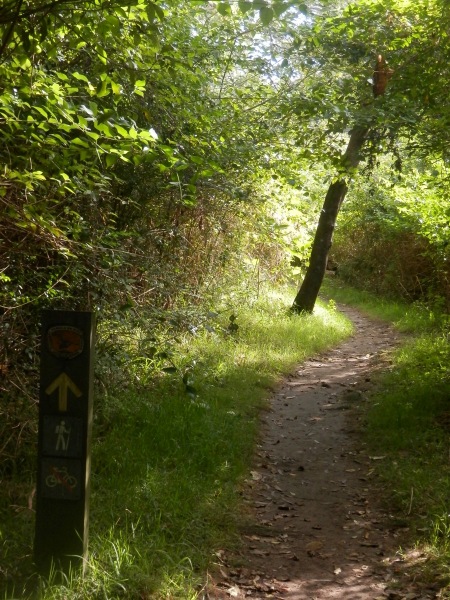
No trouble reaching our 10, 000 steps on Saturday. The tracks we wandered guided us through scrublands, bush, squiggly gum stands and fern gullies – a photographer’s dream. Where the bush track winds up to the road, which it does in several places, the road is shared by cyclists and runners. I thought there would have been more families enjoying the proximity of a national park within a few kilometres of such a major city.
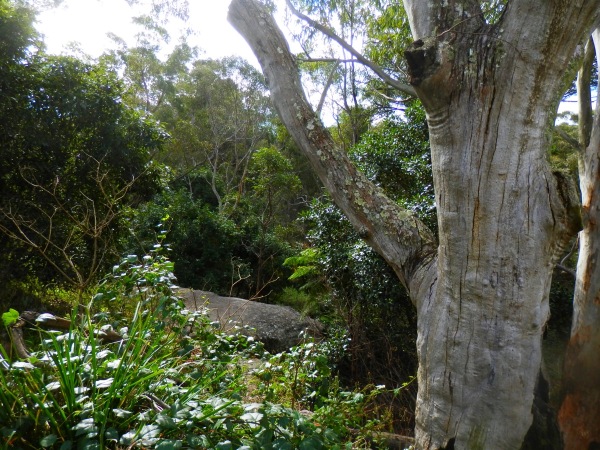
This is one of the largest camp grounds we have stayed in and yet one of the quietest which is surprising given it lies beneath the flight path of Sydney’s airport and is less than one kilometre from a major road. The park caters for every variety of campers from those who walk in and pitch their tent, campers, camper trailers, caravans, fifth wheel rigs as well as sites allocated for those who are sleeping in their vehicles. The last category of campers is something we have not experienced in a camp ground before. There is also a large number of cabins.
Despite the variety, the grounds are quiet and well-maintained and beautifully set out. Expensive at $40 a night for a powered site for off-season. Something we’ve not seen before is how the categories of camper vehicles have been allotted different parts of the camp ground. The camper trailer sites in one location, unpowered tents in another, powered tents somewhere else again and so on.
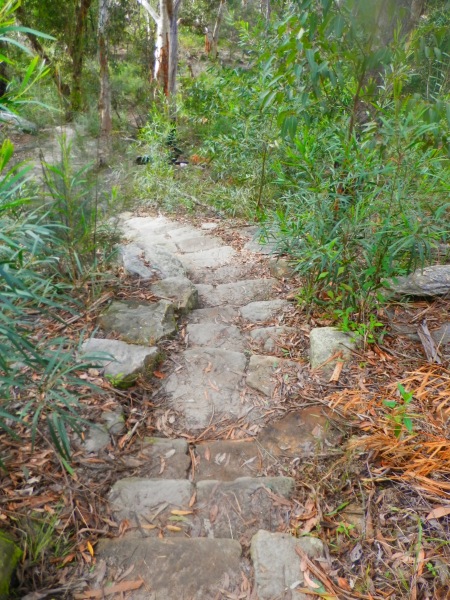
A great break away and all within two hour’s of home.

